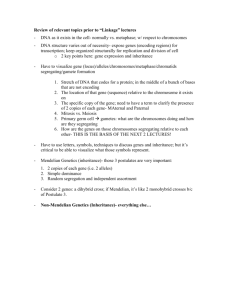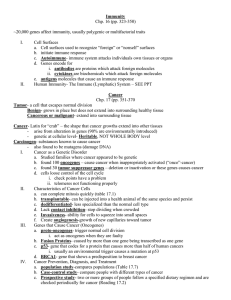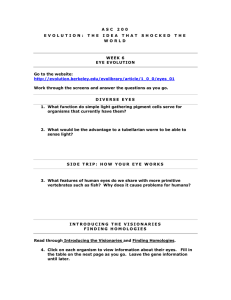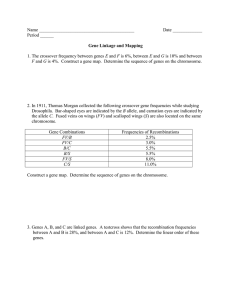PPT
advertisement
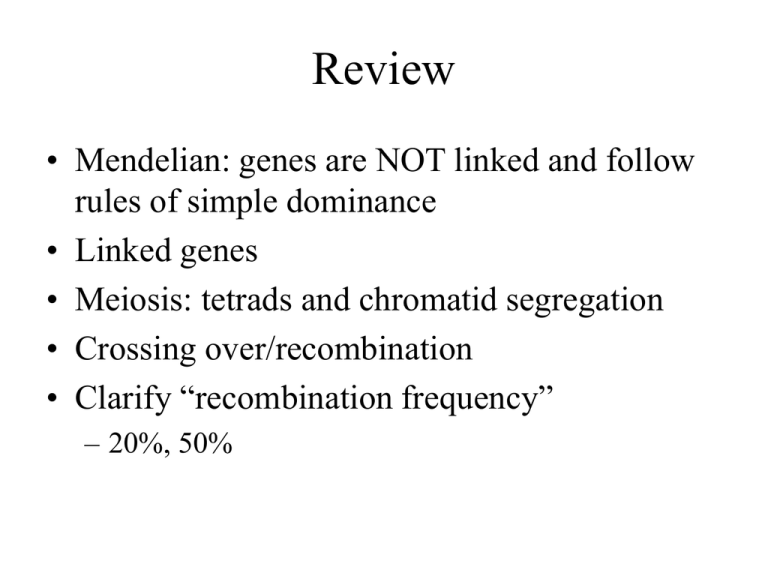
Review • Mendelian: genes are NOT linked and follow rules of simple dominance • Linked genes • Meiosis: tetrads and chromatid segregation • Crossing over/recombination • Clarify “recombination frequency” – 20%, 50% Crossing-Over Perspective: Historically, the conclusions of genetic experiments were based on the results of selected matings; In other words, we didn’t know what was happening inside the cell, but we could make conclusions based on the phenotypic results (e.g. ratios) of the offspring. It was only recently that scientists were able to physically illustrate what happens during many of these complicated events, such as “crossovers” Perspective: These lectures are based on the relationship between genes; within a cell, within an individual, and within a population. When we throw terms out there like “Mendelian” or “recombinant” or “nonparental” or “independent (segregation)”, we are not making statements about all of the genes, but rather about one gene relative to another; or one gene relative to a few others… …If we were to pick 1 gene at random, it might have 2 alleles that act in a manner of simple dominance; if we were to then pick another gene at random, it might be on a separate chromosome, which means it segregates independently of Gene 1; and if the trait associated with Gene 2 also exhibited simple dominance, then we would have picked two genes that fall under the description of Mendelian genetics… …If instead, our Gene 2 was located on the same chromosome, we would now refer to the relationship between the 2 genes as “linked”, which is non-Mendelian. If we couldn’t actually “see” the 2 genes to know they were linked, we could find out by conducting several matings and counting the number of offspring with each possible phenotype.




